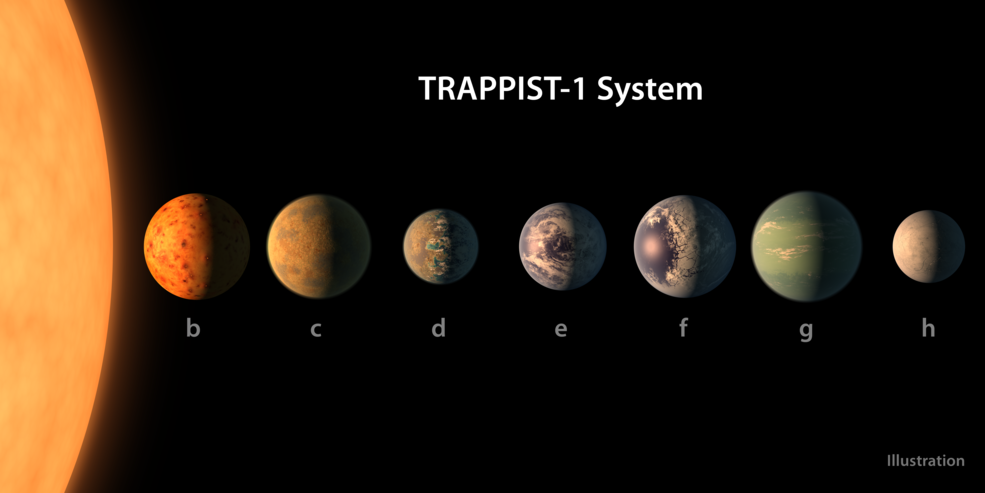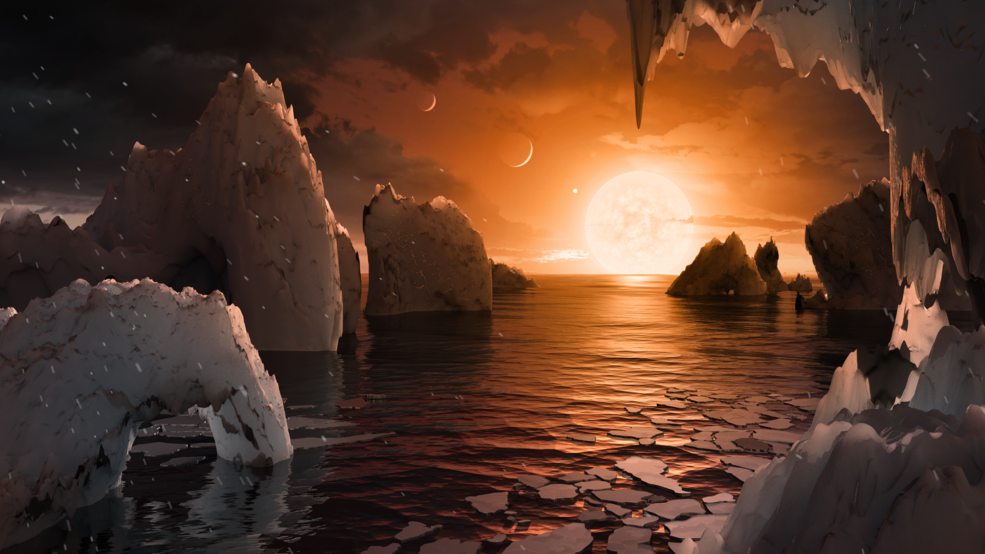NASA on Wednesday announced the discovery of seven Earth-sized planets orbiting a single star. Even more exciting is the belief that three of these planets are located within their star's habitable zone, the area around a star in which conditions are best to foster liquid water on a rocky planet.
The solar system is located around 40 light-years (235 trillion miles) from Earth in the constellation Aquarius. While that may sound far away, it is actually relatively close in terms of celestial bodies.
The discovery isn't entirely new. In May of 2016, researchers using The Transiting Planets and Planetesimals Small Telescope (TRAPPIST) in Chile announced they had discovered three planets in the exoplanet system dubbed TRAPPIST-1.

Since that time, NASA's Spitzer Space Telescope along with help by several ground-based telescopes including the European Southern Observatory's Very Large Telescope confirmed the existence of two of these planets and discovered five additional planets, thus increasing the number of known planets in the system to seven.
Based on the estimated densities of the planets, it is likely that all of them are rocky. All of them orbit closer to their star than Mercury does to our own sun. What's more, they're so close to each other that someone standing on one planet could likely see geographical features or clouds on other planets with the naked eye.

The James Webb Space Telescope scheduled to launch in 2018 should provide astronomers with many more answers regarding TRAPPIST-1 by being able to detect the chemical fingerprints of water, oxygen, methane, ozone and other components of a planet's atmosphere.